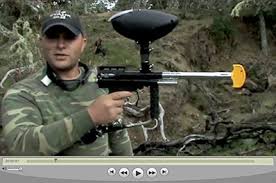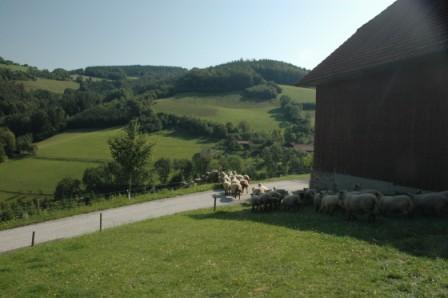
It was fun to read all of your comments last week about your opinions on lawn care. To follow up on it I’m going to talk a little bit about why I’m not fond of companies which apply herbicides multiple times throughout the year. But first I think I’ll mention why I apply herbicides at all — aesthetics. That’s it — the whole reason. Could I go the no-lawn route? Yes, but I like having a yard to run in. Not a huge yard, but a little yard to play tag with the kids.
What I long for though is the yard from the house that I grew up in. Our house in southeastern PA (About an hour west of Philly and an hour east of Lancaster) was set back about 800 feet from the road and was on old agricultural land. The area around the house was planted in grass in the mid 70s and then it was left alone. Fertilized once the first year I think, but that’s it. Dandelions invaded quickly as did clover. Over the years the clover began to dominate the grass, but not to the point that the grass disappeared, and the lawn actually appeared relatively homogeneous. Dandelions never left, but their numbers declined. The clover grew low and the grass never shot up like it does in a heavily fertilized lawn and so mowings only happened once every two weeks or so (well, OK, sometimes more often depending on the weather and where on the lawn you were — the spot over the septic tank needed mowing every 48 hours or so). The grass did go dormant most summers, but 800 feet from the road there wasn’t anyone to complain, and besides, the clover kept the lawn from appearing completely scorched. The lawn looked good for well over 30 years (until my parents remodeled the house and the yard was torn up).
The typical suburbanite might not have liked this lawn, but to me this lawn looked great, and, besides, it was low maintenance. The reason I’m bothering to tell you about this lawn though is because it illustrates so well what lawn care companies make impossible. They say (and by “they” I mean professors like myself) that pesticides beget pesticides and fertilizers beget fertilizers, and nowhere is that as true as in a well manicured lawn. The herbicide of choice is 2,4 D (though there are many others that are used) which lawn care companies apply multiple times over the the course of a year. This pesticide does a great job of killing dandelions, but it also kills clover. It rarely hurts grass unless it’s grossly over-applied. The problem with killing clover is that this clover is the stuff that fed the grass in the house where I grew up. Clover takes nitrogen out of the air and makes it available to grass every time the lawn is mowed (the clipped off pieces of clover degrade and the nitrogen in them feeds whatever plants are around). Without the clover you need to add fertilizers. So, because the lawn care company is keeping the lawn free of weeds they also need to fertilize because they’re killing all of the natural fertilizer. Here’s the thing, the weed that most people in the suburbs like least, dandelions, is actually very sensitive to low potassium. The lower the potassium in the soil the worse it does. In fact, dandelions can easily be out-competed by grass and clover if potassium is low — just as happened in the yard of the house where I grew up. But do lawn care companies pay attention to this (by using high nitrogen, low potassium fertilizers?) What do you think?
My guess is that many of you thought that I’d cite all kinds of scary side effects of the pesticides used on lawns. Nope. In general I think that, if used properly, they’re pretty safe for humans (with a few notable exceptions). I’ve spent a lot of time reviewing epidemiological and toxicology studies and I can think of many worse things. I am somewhat fearful of what 2,4 D may do to dogs in particular — they can’t excrete this poison like we can. Don’t think for a minute that I’m calling these poisons perfectly safe — I just think there are plenty of other better established reasons to avoid lawn care company pesticide schedules.












